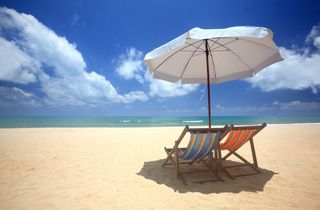Saturday Solstice Marks Official Start of Summer

After a particularly brutal winter, summer is finally here.
The summer solstice will occur Saturday (June 21) at 6:51 a.m. EDT (1051 GMT), marking the official start of summer.
During the solstice, the sun reaches its highest point in the sky over the Northern Hemisphere, which means Saturday will be the longest day of the year for every place north of the Tropic of Cancer. After the summer solstice, daylight gets progressively shorter each day until the winter solstice in December. [Image Gallery: Stunning Summer Solstice Photos]
This happens because Earth's axis is tilted about 25 degrees on its side. On the day of the summer solstice, Earth is tilted so that the North Pole points directly at the sun, Daniel Savin, an astronomy researcher at Columbia University, said. This also explains why daylight lasts so long in the north during the summer months, especially at the North Pole, where the sun will not set until September's autumn equinox.
During the summer season, Earth reaches its farthest point away from the sun, yet the season is the hottest time of the year. The way the sunlight strikes the planet's surface explains this apparent contradiction.
"It has to do with the amount of sunlight hitting per square foot," Savin told Live Science. "When the Northern Hemisphere is inclined toward the sun, the cross section is much smaller."
A small surface area exposed to that much sunlight means the Northern Hemisphere heats up. It takes a while for the summer heat to get into full swing, though, because oceans take a long time to warm up, Savin said.
Sign up for the Live Science daily newsletter now
Get the world’s most fascinating discoveries delivered straight to your inbox.
But while daylight time is at its longest during the summer, that doesn't mean nighttime is at its shortest. Twilight lasts longer during this time of year because light is scattered as the sun rises and sets.
The summer solstice happens around the same time every year because leap years keep Earth's seasons on track.
"Earth orbits the sun in 365 days and some change," Savin told Live Science. "That quarter-day builds up over time and would end up shifting the time of the seasons" without leap years.
The extra day on the calendar every four years evens out the quarter-day remaining from the previous years.
Follow Kelly Dickerson on Twitter. Follow us @livescience, Facebook & Google+. Original article on Live Science.

